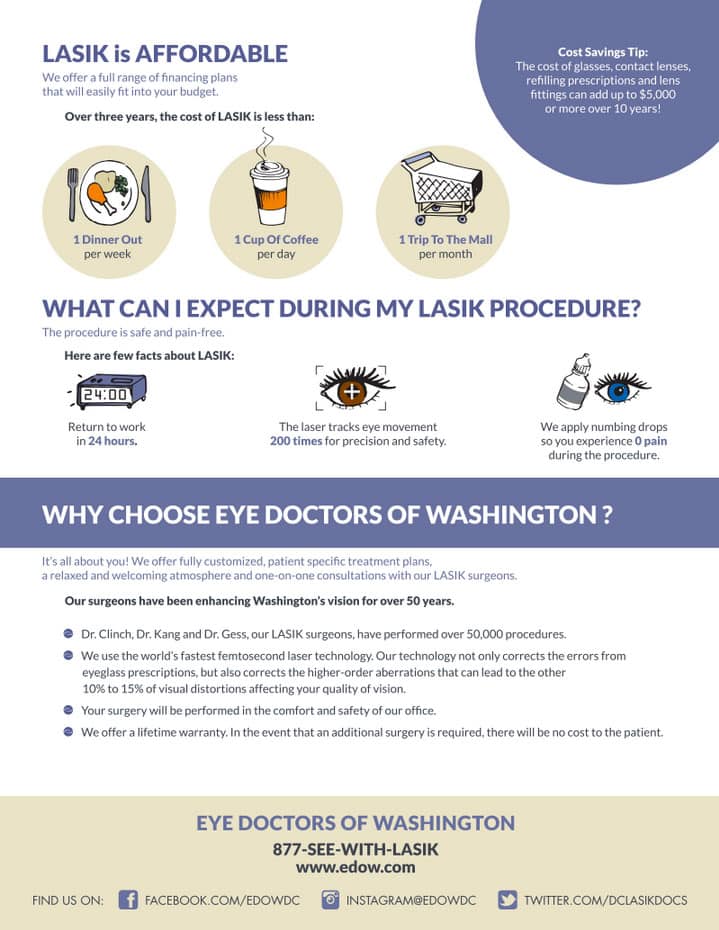What Are The Differences And Resemblances Between SMILE Eye Surgical Procedure, LASIK, And PRK?
What Are The Differences And Resemblances Between SMILE Eye Surgical Procedure, LASIK, And PRK?
Blog Article
Material By-McNamara Wilder
If you've been taking into consideration SMILE eye surgery, you might wonder exactly how it compares to LASIK and PRK. Each procedure has its own collection of advantages and considerations. From quicker recovery times to prospective dangers, there are key differences you ought to know prior to making a decision. Comprehending these distinctions will aid you make an educated option that lines up with your details demands and expectations. Curious to recognize more about just how these procedures compare carefully? Go on checking out to gain a detailed understanding of SMILE, LASIK, and PRK.
SMILE Eye Surgical Treatment Introduction
If you're thinking about SMILE eye surgical procedure, you'll discover it to be a minimally invasive procedure with a fast recovery time. During SMILE (Tiny Cut Lenticule Extraction), a laser is made use of to create a small, accurate laceration in the cornea to remove a little item of cells, improving it to correct your vision. This varies from LASIK, where a flap is produced, and PRK, where the external layer of the cornea is totally eliminated.
One of the vital advantages of SMILE is its minimally intrusive nature, causing a faster recovery process and less pain post-surgery. The recuperation time for SMILE is fairly fast, with lots of clients experiencing improved vision within a day or more. This makes it a preferred option for those seeking a practical and efficient vision modification procedure. In addition, SMILE has actually been revealed to have a reduced danger of dry eye syndrome contrasted to LASIK, making it a favorable alternative for people worried regarding this potential side effect.
Distinctions Between SMILE, LASIK, and PRK
When contrasting SMILE, LASIK, and PRK eye surgical treatments, it is necessary to recognize the unique techniques utilized in each treatment for vision adjustment.
SMILE (Little Cut Lenticule Removal) is a minimally intrusive procedure that entails developing a small cut to remove a lenticule from the cornea, reshaping it to remedy vision.
LASIK (Laser-Assisted In Situ Keratomileusis) includes developing a slim flap on the cornea, using a laser to improve the underlying cells, and afterwards repositioning the flap.
PRK (Photorefractive Keratectomy) eliminates the outer layer of the cornea before improving the cells with a laser.
The major distinction depends on the means the cornea is accessed and dealt with. SMILE is flapless, making it a great alternative for people with thin corneas or those associated with call sports. LASIK uses rapid aesthetic recuperation due to the flap creation, but it might position a greater threat of flap-related issues. PRK, although having a much longer healing duration, prevents flap-related problems completely.
Comprehending these differences is critical in selecting the most appropriate treatment for your vision correction demands.
Benefits And Drawbacks Comparison
To review the benefits and drawbacks of SMILE, LASIK, and PRK eye surgeries, it's important to think about the particular benefits and potential constraints of each treatment. SMILE surgery provides the benefit of a minimally invasive procedure, with a smaller cut and possibly quicker recovery time contrasted to LASIK and PRK. click this over here now lowers the risk of completely dry eye post-surgery, a typical side effect of LASIK. However, SMILE might have restrictions in treating greater levels of myopia or astigmatism contrasted to LASIK.
LASIK surgical treatment offers fast visual recovery and minimal discomfort during the treatment. It's highly effective in dealing with a large range of refractive mistakes, including nearsightedness, hyperopia, and astigmatism. Yet, LASIK lugs a threat of flap complications, which can affect the corneal structure.
PRK eye surgical treatment, while not as preferred as LASIK, prevents creating a corneal flap, decreasing the risk of flap-related difficulties. It's suitable for patients with thin corneas or irregular corneal surfaces. However, PRK has a longer recovery time and may involve extra pain during the healing procedure.
Verdict
So, when it concerns choosing in between SMILE, LASIK, and PRK, think about it like choosing the perfect set of footwear. cataract surgery in both eyes is like a smooth, comfortable pair of tennis shoes - quick and easy.
LASIK is much more like stylish high heels - fancy and quick, but with some possible threats.
PRK is like strong hiking boots - trustworthy and sturdy, yet calling for a bit even more effort and time.
Inevitably, the very best selection depends on your private demands and choices.
